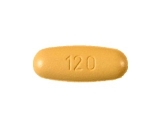Clavulanate potassium amoxicillin
Clavulanate Potassium Amoxicillin is a combination medication used to treat various bacterial infections in the body. It contains a combination of amoxicillin, a broad-spectrum antibiotic, and clavulanate potassium, which helps to prevent bacteria from becoming resistant to the treatment.
This medication is commonly prescribed for infections of the respiratory tract, urinary tract, skin, and ears. It can also be used to treat dental infections, bone infections, and some sexually transmitted infections.
The dosage of Clavulanate Potassium Amoxicillin will depend on the specific infection being treated as well as the patient's age and overall health. It's important to take this medication exactly as prescribed and to complete the full course of treatment, even if symptoms improve before the medication is finished.
Like all medications, Clavulanate Potassium Amoxicillin can cause side effects. Common side effects include nausea, vomiting, diarrhea, and stomach pain. More serious side effects such as difficulty breathing, swelling of the face, and severe skin reactions are rare but require immediate medical attention.
If you have any questions about Clavulanate Potassium Amoxicillin or if you experience any side effects while taking this medication, speak to your healthcare provider.
What is Clavulanate Potassium Amoxicillin?
Definition
Clavulanate Potassium Amoxicillin is a medication that is commonly used to treat a variety of bacterial infections. It is a combination of two drugs - amoxicillin, which is an antibiotic, and clavulanate potassium, which helps to prevent the breakdown of amoxicillin by certain bacteria.
Uses
Clavulanate Potassium Amoxicillin is commonly used to treat infections of the respiratory tract, urinary tract, skin, and ears. It can also be used to treat infections that are caused by bacteria that are resistant to other antibiotics.
Some of the conditions that may be treated with Clavulanate Potassium Amoxicillin include pneumonia, bronchitis, sinusitis, tonsillitis, ear infections, and cystitis.
Dosage
The dosage of Clavulanate Potassium Amoxicillin will depend on the condition being treated, as well as the age and weight of the patient. It is typically taken orally, either with or without food.
It is important to follow the dosing instructions provided by your doctor or pharmacist, as taking too much or too little of the medication can result in ineffective treatment or adverse effects.
Side Effects
Common side effects of Clavulanate Potassium Amoxicillin may include diarrhea, nausea, vomiting, abdominal pain, and skin rash. Less commonly, it may cause more serious side effects, such as allergic reactions or liver problems.
If you experience any adverse effects while taking Clavulanate Potassium Amoxicillin, it is important to seek medical attention right away.
Conclusion
Clavulanate Potassium Amoxicillin is a powerful medication that can be used to treat a variety of bacterial infections. However, it is important to take it only as directed by your healthcare provider, and to be aware of the potential side effects. If you have any questions or concerns about this medication, be sure to speak with your doctor or pharmacist.
Uses
Bacterial Infections
Clavulanate Potassium Amoxicillin is a broad-spectrum antibiotic used to treat a range of bacterial infections. It is particularly effective against infections caused by gram-positive bacteria such as Streptococcus pneumoniae and Staphylococcus aureus, as well as gram-negative bacteria like Escherichia coli and Klebsiella pneumoniae.
Some of the conditions that can be treated with Clavulanate Potassium Amoxicillin include:
- Bronchitis
- Pneumonia
- Sinusitis
- Ear infections
- Urinary tract infections
- Skin infections
- Dental infections
H. pylori Infection
Clavulanate Potassium Amoxicillin is also used in combination with other medications to treat Helicobacter pylori infection, a bacterial infection that causes ulcers in the stomach and small intestine.
| Drug | Dose |
| Clavulanate Potassium Amoxicillin | 1000mg twice daily for 14 days |
| omeprazole | 20mg twice daily for 14 days |
| clarithromycin | 500mg twice daily for 14 days |
This combination therapy is highly effective in eradicating H. pylori infection and reducing symptoms of peptic ulcer disease.
What conditions can be treated with Clavulanate Potassium Amoxicillin?
Bacterial Infections
Clavulanate Potassium Amoxicillin is an antibiotic medication that can treat a number of bacterial infections. This includes infections in the ear, nose, throat, urinary tract, skin, and respiratory tract. It is also used to treat dental infections, such as periodontitis.
Sexually Transmitted Infections
Clavulanate Potassium Amoxicillin can also be used to treat certain sexually transmitted infections, such as chlamydia, gonorrhea, and bacterial vaginosis. It is important to note, however, that it may not be effective against all strains of these infections and that testing is usually required to confirm a diagnosis.
Lyme Disease
Clavulanate Potassium Amoxicillin may also be prescribed to treat Lyme disease, a bacterial infection transmitted by ticks. When taken early, it can help prevent the development of serious symptoms such as arthritis, neurological problems, and heart palpitations.
Mild to Moderate Skin Infections
Clavulanate Potassium Amoxicillin is also effective in treating mild to moderate skin infections, such as impetigo, cellulitis, and folliculitis. It is important to finish the entire course of medication even after the visible symptoms have disappeared to ensure that the infection is fully eradicated.
Breastfeeding-Associated Infections
Clavulanate Potassium Amoxicillin is sometimes used to treat infections that occur during breastfeeding, such as mastitis. It is important to consult with a healthcare provider before taking this medication while breastfeeding to ensure that it is safe for both the mother and the baby.
- Note: Clavulanate Potassium Amoxicillin may not be appropriate for everyone, and it is important to follow the dosage instructions provided by a healthcare provider. It is also essential to complete the entire course of medication even if symptoms have improved to ensure that the infection is fully treated.
Dosage
Adults
- The recommended dose for adults is 500mg amoxicillin and 125mg clavulanate potassium taken orally every 8 hours for 7-10 days.
- If a higher dose is required, the dose may be increased to 875mg amoxicillin and 125mg clavulanate potassium taken orally every 12 hours for 7-10 days.
- If you miss a dose, take it as soon as possible. If it is almost time for the next dose, skip the missed dose and continue with your regular dosing schedule.
Children
- The recommended dose for children is based on their weight. The usual dose is 45mg/kg amoxicillin and 6.4mg/kg clavulanate potassium taken orally every 12 hours for 7-10 days.
- If your child has trouble swallowing pills, they may be able to take a liquid form of the medication. Check with your doctor or pharmacist for more information.
Note: Do not exceed the recommended dose, as this may increase the risk of side effects. Always follow the dosage instructions provided by your doctor or pharmacist.
Elderly
If you are an elderly patient, your doctor may start you on a lower dose of Clavulanate Potassium Amoxicillin and gradually increase it if necessary. This is because elderly patients may be more sensitive to the effects of the medication.
Pregnancy and breastfeeding
If you are pregnant or breastfeeding, talk to your doctor before taking Clavulanate Potassium Amoxicillin. The medication may not be safe for use during these times, and your doctor may want to monitor you closely while taking the medication.
How is Clavulanate Potassium Amoxicillin taken?
Dosage
The dosage of Clavulanate Potassium Amoxicillin depends on the severity of the infection and the patient's weight and age. It is usually taken orally, either with or without food. The medicine must be taken regularly at evenly spaced intervals to optimize its effectiveness. The dosage should be strictly adhered to as advised by the doctor.
Side Effects
Clavulanate Potassium Amoxicillin may cause several side effects including nausea, vomiting, diarrhea, headache, and skin rash. In rare cases, it may also cause severe allergic reactions such as difficulty breathing, swelling of the face, tongue or throat, and hives.
Precautions
Patient with a history of liver disease, kidney disease, or allergies to penicillin or cephalosporin should notify their doctor before taking Clavulanate Potassium Amoxicillin. Women who are pregnant or breastfeeding should also consult with their doctor before using this medication. It is important to not stop taking Clavulanate Potassium Amoxicillin without consulting a doctor.
Conclusion
Clavulanate Potassium Amoxicillin is a potent and effective antibiotic used for treating a variety of bacterial infections. Following the recommended dosage and maintaining constant communication with the doctor will help to achieve the best results while reducing the possibility of side effects. With all medication, it is essential to keep to the prescribed dose and alert a physician about any unusual symptoms that may develop.
Side Effects
Common Side Effects
Clavulanate Potassium Amoxicillin is a widely used antibiotic that is generally safe, but it may cause some side effects. The common side effects that you may experience include:
- Nausea and vomiting
- Diarrhea
- Headache
- Rash
- Stomach upset
Serious Side Effects
Although rare, Clavulanate Potassium Amoxicillin may cause some serious side effects that require immediate medical attention. These include:
- Allergic reactions that may cause difficulty breathing, swelling of the lips, tongue, or face, or hives
- Severe watery or bloody diarrhea
- Seizures
- Yellowing of the skin or eyes
- Unusual bleeding or bruising
Precautions
Before taking Clavulanate Potassium Amoxicillin, it is important to inform your doctor if you have any allergies, liver or kidney problems, or any other health conditions. Pregnant and breastfeeding women should also talk to their doctors before taking this medication. It is essential to follow the doctor’s instructions and complete the prescribed course of treatment to avoid any complications or bacterial resistance.
Conclusion
Clavulanate Potassium Amoxicillin is an efficient antibiotic that can treat various bacterial infections. Although it may cause some side effects, it is generally safe and well-tolerated. Patients should inform their doctors about any health conditions or medication they are taking to avoid any drug interactions or complications. If you experience any severe side effects, seek medical attention immediately.
| Common Side Effects | Serious Side Effects |
|---|---|
| Nausea and vomiting | Allergic reactions |
| Diarrhea | Severe watery or bloody diarrhea |
| Headache | Seizures |
| Rash | Yellowing of the skin or eyes |
| Stomach upset | Unusual bleeding or bruising |
What are the possible side effects of Clavulanate Potassium Amoxicillin?
Common side effects
The common side effects of Clavulanate Potassium Amoxicillin include diarrhea, nausea, vomiting, and stomach pain. These symptoms are usually mild and go away on their own within a few days. To prevent these side effects, take Clavulanate Potassium Amoxicillin with food or milk.
Severe side effects
In rare cases, Clavulanate Potassium Amoxicillin can cause severe side effects, such as an allergic reaction, liver damage, and blood disorders. If you experience any of the following symptoms, stop taking the medication and seek medical attention immediately:
- Swelling of the face, lips, tongue, or throat
- Rash or hives
- Difficulty breathing or swallowing
- Pale skin, fever, and jaundice (yellowing of the skin or eyes)
- Unusual bleeding or bruising
- Severe stomach pain or cramping
Pregnancy and breastfeeding
If you are pregnant or breastfeeding, consult your doctor before taking Clavulanate Potassium Amoxicillin. The medication may harm the fetus or pass into breast milk and affect the baby.
Interactions with other medications
Clavulanate Potassium Amoxicillin may interact with other medications, such as probenecid, methotrexate, and blood thinners. Before taking the medication, inform your doctor of any other medications you are taking.
Conclusion
Clavulanate Potassium Amoxicillin is a highly effective antibiotic medication, but it does have some potential side effects. Follow your doctor's instructions and take the medication as directed to reduce the risk of side effects and prevent complications.
Precautions
Before using Clavulanate Potassium Amoxicillin medication, inform your doctor
It is important to inform your doctor about your medical history, especially if you have any allergies. A history of kidney or liver disease may also affect your dosage and treatment.
Do not use this medication if you are allergic
If you are allergic to any of the ingredients present in Clavulanate Potassium Amoxicillin medication, you should not use it. Be aware of any signs of an allergic reaction, such as itching, hives, or difficulty breathing, and seek immediate medical help.
Give your doctor a full list of the medication you are taking
Be sure to inform your doctor about all the medication you are taking, including over-the-counter drugs, vitamins, and herbal supplements. Certain medications may interact with Clavulanate Potassium Amoxicillin and affect your treatment.
Use with caution during pregnancy and breastfeeding
If you are pregnant or breastfeeding, it is important to speak with your doctor before using Clavulanate Potassium Amoxicillin. This medication may affect the growth and development of the fetus or infant, and alternative treatments may be necessary.
Do not share your medication with others
This medication is prescribed based on your medical condition and needs. Never share your Clavulanate Potassium Amoxicillin medication with others, even if they have similar symptoms, as it can be harmful to their health.
Store Clavulanate Potassium Amoxicillin properly
Store this medication at room temperature, away from moisture, heat, and light. Keep it out of reach of children and pets. Unused or expired medication should be properly disposed of by following your local guidelines.
Follow the prescribed dosage and never stop medication without consulting your doctor
Follow the dosage prescribed by your doctor and do not stop medication even when you feel better. Stopping the medication without consulting your doctor may lead to the recurrence of the infection or may cause other health problems.
Be aware of the side effects and report them immediately
Be aware of the possible side effects of Clavulanate Potassium Amoxicillin, such as diarrhea, nausea, or skin rash, and report them to your doctor immediately for necessary treatment.
Do not overdose on Clavulanate Potassium Amoxicillin
Do not attempt to overdose on Clavulanate Potassium Amoxicillin, as it may lead to severe health problems. Follow the dose prescribed by your doctor and do not take more than what is recommended.
Be aware of the risks associated with long-term use
Long-term use of Clavulanate Potassium Amoxicillin may increase your risk of developing antibiotic-resistant infections. Be sure to complete your treatment as prescribed by your doctor to minimize the risk.
Inform your dentist or surgeon before a dental or surgical procedure
Inform your dentist or surgeon that you are taking Clavulanate Potassium Amoxicillin before any dental or surgical procedure. This medication may interfere with certain medical procedures, and your doctor may adjust your treatment accordingly.
What precautions should be taken when using Clavulanate Potassium Amoxicillin?
1. Follow the prescribed dosage and duration of treatment
It is important to follow the exact prescribed dosage and duration of treatment when taking Clavulanate Potassium Amoxicillin. This antibiotic should not be taken in larger or smaller amounts or for longer than recommended by your healthcare professional.
2. Inform your doctor of any allergies or medical conditions
Before taking this medication, it is important to inform your doctor of any allergies you may have and any medical conditions you may be suffering from, such as liver or kidney disease, mononucleosis, or any type of allergy, especially if you have had an allergic reaction to other antibiotics in the past.
3. Do not share this medication with others
Clavulanate Potassium Amoxicillin is a prescription medication and should not be shared with others. It is important to keep this medication out of reach of children and pets.
4. Take with food and plenty of water
Clavulanate Potassium Amoxicillin should be taken with food and plenty of water to avoid stomach upset and to allow proper absorption of the medication.
5. Avoid alcohol during treatment
During treatment with Clavulanate Potassium Amoxicillin, it is recommended to avoid alcohol as it may interfere with the effectiveness of the medication and increase the risk of side effects.
6. Watch for side effects and adverse reactions
While taking Clavulanate Potassium Amoxicillin, it is important to watch for any potential side effects or adverse reactions. Some common side effects may include nausea, vomiting, diarrhea, headache, or rash. If you experience any severe side effects or signs of an allergic reaction, such as hives, difficulty breathing, or swelling of the face, lips, tongue, or throat, seek immediate medical attention.
7. Store medication properly
Clavulanate Potassium Amoxicillin should be stored at room temperature, away from moisture and heat, and should not be allowed to freeze. Properly dispose of any unused medication after completing the full course of treatment.
8. Do not stop taking medication without consulting your doctor
It is important to complete the full course of treatment, even if symptoms improve before the medication is finished. Do not stop taking Clavulanate Potassium Amoxicillin without consulting your doctor first, as this may increase the risk of developing antibiotic-resistant bacteria.
9. Inform your doctor if you are pregnant or breastfeeding
If you are pregnant or breastfeeding, inform your doctor before taking Clavulanate Potassium Amoxicillin, as this medication may not be suitable for use.
10. Inform your doctor of all medications and supplements you are taking
Before taking Clavulanate Potassium Amoxicillin, inform your doctor of all medications and supplements you are currently taking to avoid potential drug interactions and adverse effects.
Is Clavulanate Potassium Amoxicillin the right treatment option for you?
What is Clavulanate Potassium Amoxicillin?
Clavulanate Potassium Amoxicillin is a combination medication that contains two drugs: amoxicillin and clavulanate potassium. Amoxicillin is an antibiotic, while clavulanate potassium is a beta-lactamase inhibitor. This combination medication is used to treat a variety of bacterial infections.
Is Clavulanate Potassium Amoxicillin the right treatment for you?
If you have a bacterial infection, your doctor may recommend Clavulanate Potassium Amoxicillin as a treatment option. However, this medication is not appropriate for all patients. Talk to your doctor to determine if Clavulanate Potassium Amoxicillin is the right treatment option for you.
How to take Clavulanate Potassium Amoxicillin?
Clavulanate Potassium Amoxicillin is available in tablet, chewable tablet, and liquid forms. Your dosage and frequency of dosing will depend on your condition, as determined by your doctor. It is important to take Clavulanate Potassium Amoxicillin as prescribed by your doctor and to complete the full course of treatment.
Do not stop taking the medication early, even if you start to feel better. Failure to take the full course of medication could lead to the recurrence of infection or the development of antibiotic resistance.
What are the potential side effects of Clavulanate Potassium Amoxicillin?
Like all medications, Clavulanate Potassium Amoxicillin can cause side effects. Common side effects include diarrhea, nausea, vomiting, and stomach pain. If you experience any of these side effects, talk to your doctor right away. In rare cases, Clavulanate Potassium Amoxicillin may cause severe allergic reactions. Seek emergency medical attention if you experience any signs of an allergic reaction, such as difficulty breathing, hives, or swelling of the face, lips, tongue, or throat.
If you have any concerns about Clavulanate Potassium Amoxicillin, talk to your doctor. With the right treatment and care, you can overcome bacterial infections and get back to your daily routines.
Follow us on Twitter @Pharmaceuticals #Pharmacy
Subscribe on YouTube @PharmaceuticalsYouTube





Be the first to comment on "Clavulanate potassium amoxicillin"